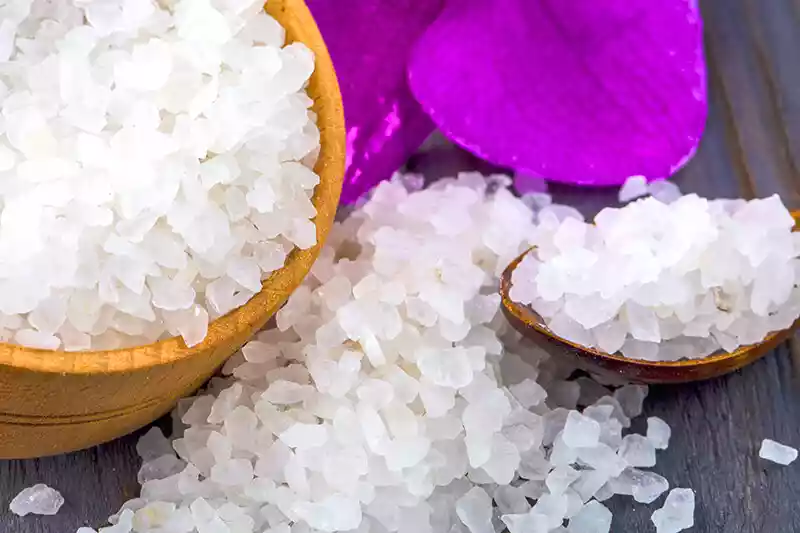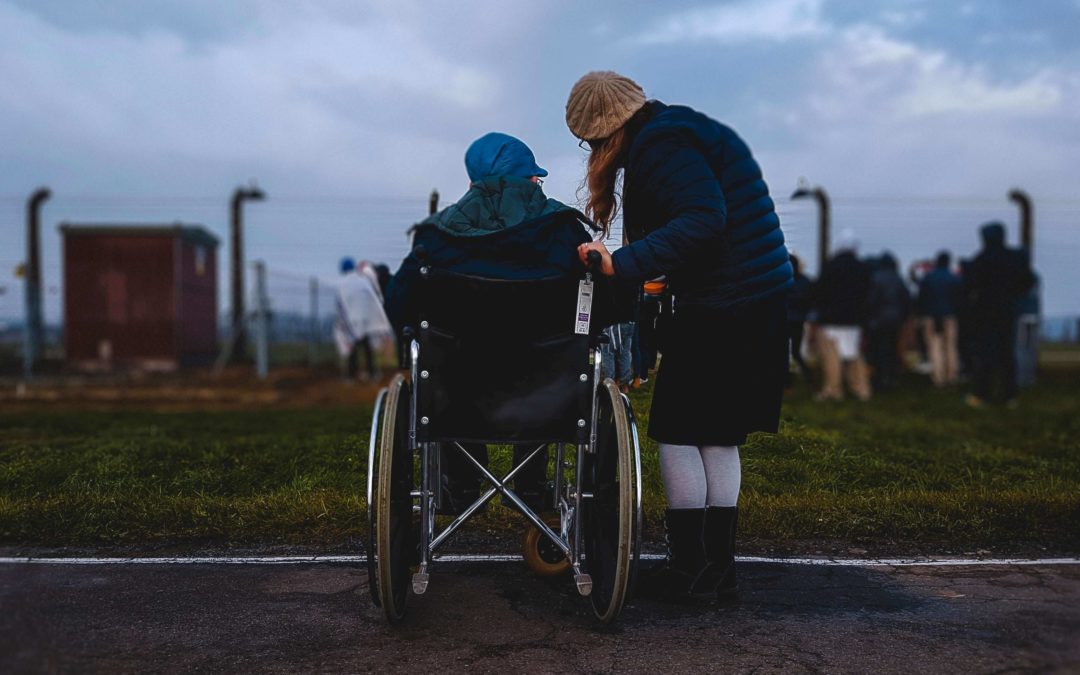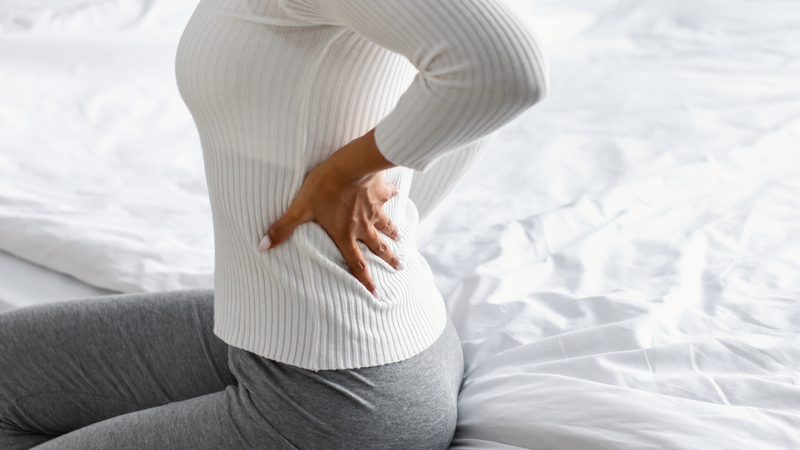
by Jon Pearce | 10th Dec, 2021 | Arthritis

If you suffer from arthritis, then you’ll already know the soothing effects of a warm bath or shower on the joints. However, could this treatment be made even more effective by simply adding in bath salts?
Soaking in Epsom Salts to help arthritis seems to have been a successful remedy for many looking for an easy home-based treatment. Epsom salts are widely available in most supermarkets, health food shops and pharmacies.
But does it actually work and are Epsom Salts good for you? We took a deep dive into the research to bring you the facts.
What are Epsom Salts?
Epsom salts are a naturally occurring mineral containing magnesium and sulphate found in rock-like formations.
People have been using Epsom Salts as a tonic for many ailments for over 100 years. Most commonly, people have been known to put it in their baths to relieve aching muscles or help with skin problems.
Less common uses include sprinkling them on flower beds to deter slugs or mixing them with conditioner to give hair volume!
Are you affected by mobility issues when bathing?
Simply fill out a quick form and see how we can transform the way you bathe.
Request Free Brochure
The active ingredient in Epsom Salts that is believed to be beneficial to health, is the high concentration of magnesium. As modern lifestyles have resulted in many people having a deficiency in this mineral, boosting magnesium has far-reaching benefits.
As the name suggests, Epsom salts do originate from Epsom, England, where it was discovered in natural underground springs in the early 17th century; but isn’t actually salt as we know it.
Did you know? – Epsom Salts are a compound of magnesium, sulphur, and oxygen – unlike sea salt which is mostly sodium chloride.
Epsom salt is also not the same as Dead Sea salts, which are a combination of minerals that are found in the Dead Sea in Israel. When dissolved in water, Epsom salt releases magnesium and sulphate, the key ingredients in most spa mineral baths.
Both magnesium and sulphur are thought to be helpful to the body and seem to be absorbed effectively through the skin, which is exactly why an Epsom salt soak is so good for arthritis sufferers.
Which conditions are Epsom salts known to help?
- Arthritis pain and swelling
- Bruises and sprains
- Fibromyalgia
- Ingrown toenails
- Insomnia
- Psoriasis
- Sore muscles after exercise
- Sunburn pain and redness
- Tired, swollen feet
Why is Magnesium important?
Magnesium is an incredibly important mineral – in fact, it is needed by every cell in the human body and is required for more than 300 biochemical processes & enzyme reactions.
Some of the functions for magnesium in the body include:
- Easing chronic and muscle pain
- Relaxing muscles
- Improving heart health
- Preventing constipation
- Improving bone density
- Contributing to muscle building
- Lowering the risk of diabetes
- Aiding in collagen formation which helps skin, hair and joints
However, research shows that large numbers of people – possibly as much as 80% of the population – may be suffering from chronic magnesium deficiency.
Causes of magnesium deficiency range from eating too many processed foods, saturated fat, sugar, carbonated drinks and not eating enough whole foods such as leafy greens which contain the mineral. Stress, alcohol and taking some medications can also deplete the body’s magnesium levels.
Simply topping up these levels using magnesium supplementation such as Epsom salt, is thought to provide the body with what it needs to heal naturally.
Epsom Salt Baths vs Regular Baths for Arthritis
When you have chronic pain or arthritis, the physical benefits of soaking in a hot bath or shower can be extremely comforting. The heat from the water is soothing on stiff joints and aching muscles.
Furthermore, the simple act of a self-care practice can help to relieve stress caused by pain, which is very important for managing chronic conditions like arthritis. But, are Epsom salt baths better for arthritis, than regular ones?
Whilst the thermal and mechanical benefits of warm water on improving joint mobility and muscle pain are well-known within research studies, the evidence for the chemical benefits of Epsom salt is mixed.
Some studies show Epsom salt baths, otherwise known as mineral baths, increase certain cells that mediate inflammation and enhance circulation and breathing, which has an anti-inflammatory effect on patients suffering with arthritis.
Along with reducing inflammation, research also points to an increase in endorphins, the body’s natural painkillers, after Epsom bath soaks.
However, there is disagreement in the medical world as to how much magnesium or any other minerals can be absorbed by the skin. More studies are needed to determine this to help to understand what dosage, if any, is effective for patients.
Osteoarthritis
Promising recent research has emerged from Turkey highlighting the positive effects of mineral baths on patients specifically with osteoarthritis. Within the study, a higher percentage of older people with knee osteoarthritis improved with mineral baths alongside physical therapy than with a personal trainer alone.
However, although bathing in minerals such as Epsom salts improved outcomes across a variety of types of arthritis, this study also discovered those with hip osteoarthritis did not improve significantly in either pain or functioning. This could indicate that deeper joints are harder to soothe than those closer to the surface of the skin.
Rheumatoid Arthritis
Mixed results have emerged from a 2018 review when looking at the effects of mineral baths and Rheumatoid Arthritis, although individual studies do highlight some benefits.
In another study from Turkey, people taking Rheumatoid Arthritis medication improved with 2 weeks of ‘spa therapy’ added. A 2016 study from Portugal also showed better function in those with Rheumatoid Arthritis when given 21 days of mineral bath treatment than with standard treatment alone.
Psoriatic arthritis
According to a review conducted by Italian researchers, significant improvement in joint and spine symptoms, as well as the skin, was found with participants suffering with psoriatic arthritis.
It is understood that Epsom salts and other mineral baths ease inflammation found in psoriasis by breaking down a build-up of protein called keratin on the skin’s surface.
How to have an Epsom salt bath for arthritis at home
One of the fantastic benefits of Epsom salt baths is the ease of being able to have it at home rather than attending a spa or treatment centre. This allows you to experiment for yourself and see if you can feel the benefits of your personal arthritis symptoms.
- Fill your tub. Run your bath as you normally would, being mindful of the temperature. You want to be warm and comfortable but people with decreased sensation e.g., those with nerve damage, should be particularly careful not to let the water get too hot.
- Add the Epsom salts. Be generous with the salts, adding around 1–2 cups under the running tap to allow it to dissolve.
- Soak for around 20–30 minutes. Soak in your walk-in bath or shower for a substantial period. This allows time for the magnesium to absorb into the skin.
- Apply moisturiser – Epsom salt baths can be drying for some people, so applying a natural moisturiser can be beneficial once you are out of the bath and dried.
- Drink water. Epsom salt baths can also be dehydrating, especially if you stay in for a long soak. Hydrate afterwards with a glass of water.
- Make it a routine. You are more likely to notice a difference with this treatment if it is performed regularly. Studies showing benefits in spa soaks were seen after two to three weeks of daily baths, however you may choose to do this 2–3 times a week over a longer length of time to gain the same benefits over time instead.
Other treatments using Epsom salt therapy
If you want to take the Epsom salt baths for arthritis to the next level, then perhaps consider a Flotation Tank experience. Not only is the concentration of Epsom salts in a float pod much denser than in a normal bath, but there are also health benefits on top of those provided by Epsom salts and the magnesium it contains.
The concentration of Epsom salts is so high, in fact, that you float effortlessly in the water which is kept steadily at body temperature for maximum comfort. This allows tired, aching muscles and joints to relax as there is no weight-bearing down on them whilst you are fully supported by the water.
A complete lack of sensory input in the dark, silent space means your mind can fully relax too, producing dopamine and endorphins supporting your painful symptoms further.
If you’re looking for mobility support for you or a loved one in the bathroom, check out our range of walk in baths and showers. Or, request a free brochure to find out more.

by mobilityplus | 19th Dec, 2019 | Arthritis

For people with arthritis, carrying out day-to-day tasks is far from easy – in fact, very often attempting basic tasks can be both difficult and painful.
Whether you’ve recently been diagnosed or you have been living with arthritis for some time, there are many ways that the condition can impact your life from swelling and pain in your joints to sleeping problems, general exhaustion and reduced flexibility.
If you’re wondering whether there’s anything you can do differently to make things easier or reduce your pain, read on.
The power of exercise
If you suffer with painful arthritis, exercise may be the last thing on your mind. But hear us out – according to the NHS, maintaining an active lifestyle can actually help many people to reduce and prevent the pain caused by arthritis. What’s more, it can also help to improve your flexibility and range of movement, give you an energy boost, reduce any stiffness in the joints and improve your muscle strength.
We’re not suggesting you enter a marathon or compete in a weight-lifting challenge – but providing you stick to the correct level and type of movement, exercising certainly won’t make your arthritis any worse. It could even help!
Speak to your GP to find out which type of exercise would benefit you most – yoga, swimming and walking are all sensible options to consider.
Eating a healthy diet
When it comes to meals, the Mediterranean diet has been proven to improve the symptoms of arthritis. Whether you choose to follow this specific eating plan or simply give your overall diet a makeover, maintaining a balanced and healthy diet is vital if you have arthritis. Eating the ‘right’ foods will provide your body with all the nutrients it needs to maintain a healthy weight.
And if you are currently heavier than you should be, it’s a good idea to try to lose a little weight. This will reduce the amount of extra pressure being put on the joints in your knees, hips, feet and ankles. Reducing this pressure should help to reduce pain and improve your mobility levels.
It’s important to eat a range of foods from each of the five food groups:
- Vegetables and fruit
- Starchy foods (e.g. potatoes, rice, pasta and bread)
- Protein-rich foods like fish, meat, beans and eggs
- Dairy products such as milk and cheese
- Healthy fats and sugar
Taking up a new hobby
It’s a sad fact that having arthritis sometimes means people can find it more difficult to keep up with hobbies or interests that they enjoy. Activities like painting, playing the piano and even cookery or baking can often become a real struggle. But even if this is the case for you, there are still ways you can participate in the activities you enjoy – or you could start a brand-new hobby. Here are a few ideas:
- Music: If you’ve always enjoyed playing music but you no longer have the manual dexterity to play the piano, guitar or another favourite instrument, there are plenty of other ways to feed your love for music. Percussive instruments like chimes and bells are a good option, or you could join a local choir group if you like singing. Best of all, taking part in a group activity such as an orchestra or choir gives you a great opportunity to meet new people, socialise and have fun – so it’s a great boost for your mental health, too.
- Art & Craft Activities: When it comes to art, the possibilities are endless. If you’re no longer able to paint intricate scenes, there are still ways you can enjoy crafting. Why not ask a family member or friend to give you a hand if you need some ideas to get started?
- Dancing: It’s fair to say that some styles of dancing probably will be tricky if you have arthritis. But dancing styles such as line dancing or ballroom dancing can still be an option. Have a chat with your GP to find out which types of dancing (or exercise in general) they think would suit you best.
Caring for your joints
When you have arthritis, looking after your joints is the best way to prevent any further damage. The NHS suggests trying the following ideas to protect your joints:
- Try to use your bigger and stronger joints as levers – for example, if you need to open a heavy door, try to take the pressure on one of your shoulders, instead of your hand
- When carrying heavy items like shopping bags, use more than one of your joints to spread the load. Alternatively, use a rucksack worn on both shoulders.
- Avoid gripping things too tightly. Use the loosest grip possible or try using a padded handle which will help to widen your grip.
- Try not to sit in the same position for too long and move around as much as you are able to.
Small changes you can make at home
A few practical changes at home can make a huge difference in your quality of life:
- Keep items that you use regularly close by so that you can get them easily
- Invest in a long-handed grabber tool, to help you pick things up or assist you with cleaning tasks
- Fit levers to taps in the bathroom and kitchen to make them easier to use
- Update some of your kitchen equipment with electronic versions, for example, an electric tin opener
If you are living with arthritis and struggling to carry out your daily activities, it is always worth arranging an appointment to discuss your concerns with your GP. Don’t suffer in silence – your doctor may be able to refer you for treatment with an Occupational Therapist or prescribe a different medication to you.

by mobilityplus | 19th Dec, 2019 | Arthritis

The diagnosis of arthritis can be difficult and may cause those diagnosed to feel isolated or alone. Friends and family often form a major support network for arthritis sufferers, so understanding how to best care for your loved one can be instrumental in a more positive approach to their condition. The early stages following initial diagnosis can be the hardest time, so easing the transition to a more manageable lifestyle quickly can be a great source of improved wellbeing.
What you should know
The first step toward helping to care for your loved one with arthritis is understanding the effects of the condition. There are a number of variations of arthritis, including osteoarthritis, rheumatoid arthritis, psoriatic arthritis and gout. Each experience differing levels of discomfort or pain and limitations with mobility. Understanding how a particular condition affects your family or friend can make it easier to support them.
Some of the more common symptoms of arthritis include:
- Joint pain
- Joint stiffness
- Loss of range of motion
- Decreased muscle strength and function
- Difficulty with functional mobility
One of the best ways to understand which of these symptoms they are experiencing is to discuss their limitations or how it affects their day-to-day activities. This will then help you find ways which offer the most support that caters to their needs.
How to assist physically
Depending on how much your loved one is restricted by their arthritis will determine how much assistance they may require physically. Common issues the condition causes include limited ability to bend, kneel, walk, and reach as joints are a key area affected by arthritis. A few ways that you can help your family or friend to ease the burden of arthritis include:
- Encouraging them to be as active as possible. Gentle movements such as non-strenuous walking, water-based activities or, in general, just keeping up and about helps to maintain Sedentary behaviour can contribute to a further reduction in mobility.
- Offering to assist with activities that may be affected by their arthritis. This could be anything from assisting with household chores and shopping to helping them with transport.
- Helping with making sure they are eating a healthy and balanced diet with appropriate portion sizes. Pain may deter people from maintaining a healthy eating schedule and diet.
- Assisting them in taking their medication which can help make the pain more manageable and reduce symptoms of their arthritis, providing a more comfortable quality of life.
- Helping them to make adjustments around the home that will make getting around easier. Changes could include new seating for more comfortable reading and computer use or investing in a digital assistant such as a Google Home.
How to assist emotionally
There is more to assisting your loved one than physical help. A big part of supporting them is by letting them know you’re there for them emotionally too. Open communication between yourself and the person you care for is instrumental in the management of their arthritis. Here are a few ways you can help emotionally:
- Let them know you’re there for them, showing you care and vocalising your support is key.
- If you suspect they are depressed, encourage them to talk to their GP about management options. If they’re comfortable with you attending with them, it can provide additional support and encouragement.
- Help them to remain positive and enthusiastic about the mobility and abilities they still have.
- Work with them to find a new hobby or interest if activities they previously participated in are now difficult.
- Remind them to ask for extra help if they need it, let them know they aren’t a burden, and you’re there to assist.
By working on a relationship of trust and support, caring for your loved one will be easier as they will feel more comfortable to ask for the assistance they need. Accepting the limitations associated with arthritis and discovering new interests and opportunities are made better with a solid support network. Showing your loved one you’re there for them both physically and emotionally will make navigating their condition easier. Understanding how arthritis affects their lives will encourage a stronger relationship for both of you.

by mobilityplus | 30th Oct, 2019 | Arthritis

Inflammation and arthritis can be uncomfortable at the best of times, but have you noticed your joint pain is worse while you sleep? If inflammation is affecting your quality of sleep, it’s important to address it as soon as possible to avoid additional issues related to sleep deprivation. So, does inflammation really get worse at night?
Understanding what causes your inflammation and how you can manage or reduce its effects can be instrumental in improving the quality of your sleep and overall health. We look at a few ways you can help reduce how inflammation affects your sleep with these tips.
What causes inflammation?
Inflammation is caused by a chemical response from your body’s immune system to protect it from infections, injuries and toxins. It fights anything your body may be under attack from, sending proteins, antibodies and blood flow to the site. While in the short term, this protection is an advantage, when the inflammation lingers long term the result is painful and uncomfortable. Symptoms can range from fatigue and fever to acute pain. Arthritis is a common cause of inflammation and pain, especially as we age.
How inflammation at night affects sleep and overall health
Inflammation can become more noticeable at night when you are trying to sleep. If you are finding that falling asleep is difficult due to pain, or you’re waking throughout the night, it is worth considering how to improve your sleep situation. The effect of diminished sleep quality can be tough on the body and can cause problems such as fatigue, stomach issues and headaches among other symptoms.
Request a Free Brochure
Simply fill out a quick form and see how we can transform the way you bathe.
Request Free Brochure
You should be getting 7–8 hours of good sleep each night. If you aren’t getting your forty winks, you might be suffering from the signs of sleep deprivation, both physically and mentally. A lack of sleep can reduce our tolerance for pain, affect cognitive function and create new issues for us. If you aren’t getting a decent night’s sleep due to pain or inflammation, it could be creating a vicious cycle that is making it hard for you to find relief.
Ways that you can reduce inflammation whilst you sleep
Use heat therapy
Heat works to relieve inflammation at night by increasing blood flow and makes connective tissue more flexible. It also helps to reduce the build-up of fluid in tissue which is a key cause of inflammation. Opt for a bath before bed, remembering to give yourself time to cool before sleeping, or apply a heat pad to the joints affected by inflammation for 15–20 minutes before bed.
Review your mattress
Mattresses are a big part of good sleep hygiene and should be reviewed and changed roughly every 7–10 years. This could ultimately be a huge factor in why your inflammation is worse at night. A good mattress should be supportive, especially for those with arthritis, however, a mattress that is too hard will quickly become uncomfortable. Short of investing in a new mattress, you may benefit from a mattress topper that will aid a more supportive sleep environment.
Use pillows
Those suffering from arthritis may find using pillows as a wedge next to you or between your knees may help to relieve some of the pain, especially around the hips and knees. For those with arthritis in the neck, choosing a supportive but not too firm or high may provide a more comfortable night’s sleep.
Exercising and stretching
Staying active and keeping your body moving at home is a big factor in reducing joint pain. Joints are meant to be moved and become stiff and painful when immobile for longer periods. Keep as active as possible whether it’s by walking, practising yoga which is great for maintaining muscle tone or swimming which is ideal for those who find weight-bearing exercises painful. Increased range of motion will help ward off pain in your arthritis-affected joints.
Practice good sleep hygiene
A major reason why inflammation does get worse at night is sleep deprivation and fatigue, as it increases stress on the body when we aren’t well rested. Ensure you are implementing a good sleep routine by creating bedtime habits including:
- Going to bed and rising at the same time each day
- Avoid screens at least one hour before you go to bed. Blue light from screens has a big impact on our circadian rhythm
- Limit your daily caffeine intake and avoid caffeine after 2pm
- Avoid large meals within 2–3 hours before bed
- Establish a pre-bed routine that may involve some meditation or relaxing habits that will help calm the mind before sleep
Consider nighttime pain relief
If other alternative methods of relief are not helping or you are still struggling to reduce your pain at night you may benefit from considering some pain relief before bed. It is best to discuss these options with your doctor before taking any medications to find the most suitable option for you.
If you are experiencing better quality sleep, you’ll notice improved mental and physical ability with everyday tasks. By following the tips above, we hope you find a reduction in the effect inflammation is having on your sleep.
If you’re looking for mobility support for you or a loved one in the bathroom, check out our range of walk-in baths and showers. Or, request a free brochure to find out more.

by mobilityplus | 30th Oct, 2019 | Arthritis

Living with arthritis can be a painful experience. Not only may you feel physically limited, but it can also contribute to negative emotions. With that in mind, it’s important to know that there are ways to help alleviate the symptoms and better your quality of life.
The key is knowing the truths about arthritis. Often, it’s a misunderstood condition, but the better informed you are, the more equipped you’ll be to get the most out of each day. To help, here’s a rundown on the common myths around the condition, and the facts everyone should know.
What is arthritis?
Did you know that arthritis us one of the most common health conditions in the world? So, to say you’re not alone is an understatement. It affects approximately 10 million people in the UK of all ages, although it usually becomes apparent in people over 40.
So, if you’re 65 or over, you’re certainly not in the minority in suffering from arthritis. If you’re not sure whether you have arthritis or not, some common signs include:
- Joint stiffness, often in the wrists, hands, and knees
- Unexplained fatigue
- Swelling or pain in the joints
- A general sense of onset illness
If you’re concerned about any of these symptoms, the first step is to visit your GP, rheumatologist or orthopaedic specialist. They’ll usually conduct a physical examination and a health evaluation, which will consist of a series of questions. You may also be referred for an X-ray.
Myths on arthritis
Perhaps one of the most unhelpful things around arthritis, are the myths that come hand-in-hand with it. Debunking those and getting clued-up on the facts is the fastest route to finding both curable treatments and developing coping methods for day-to-day life.
Here are just some of the most commons myths, and the real picture behind them:
- It only affects old people – arthritis can affect people of all ages. There are different types of arthritis, some of which are more prevalent in specific groups. But it can affect anyone from children to older people.
- Wet, cold climates aggravate it – despite the long-standing myth that weather triggers arthritis, it’s actually more about creating warmth, which can be soothing. You can do this with a warm bath or shower. Or even a hot water bottle.
- Diet affects it – arthritis isn’t a condition caused by poor diet. Likewise, healthy eaters aren’t immune to arthritis. That said, it’s always good to watch your diet and eat well. By looking into different food options, you can modify your diet for the better.
- It’s curable – Unfortunately, there isn’t a cure for arthritis. That doesn’t mean the picture is bleak, however. There are many ways to manage it to slow the onset and relieve pain.
- Perceptions of whether you look good, or doomed! – if you have arthritis, you may face opinions on how well you look from others. In truth, sometimes you may look good while suffering from a general feeling of unwellness or fatigue. Or you may be visibly struggling, but that doesn’t mean that solutions aren’t out there.
Taking charge of arthritis
There are changes you can make to your lifestyle to help. Exercise is one useful way to improve arthritis. By finding a specific healthcare professional or a class specialising in arthritis-friendly movements, you can boost your mobility, health, and positivity.
You may also want to look into ways to adapt your home. By creating living spaces that aid you in your daily life, you’ll actively be boosting your independence.
Why we need to debunk the myths
Being informed, sharing your knowledge with those close to you, and finding ways to manage your arthritis are all important steps to improving your quality of life. Continuing to debunk the myths and opinions that come with arthritis is just part of it.
Ultimately, being honest with yourself and others in terms of what support you need, and finding ways to manage arthritis, you can take charge of your situation. In turn, it will increase your independence and boost your self-esteem.

by mobilityplus | 30th Oct, 2019 | Arthritis

We all do it every night, and it’s critical to our health, but much of what we know about sleep is still a mystery. Whilst the world of sleep science is relatively small, it’s growing exponentially and the more we find out about the importance of sleep, the more people are starting to make a good night’s sleep a priority.
As well as increasing cognition, productivity and emotional resilience, good sleep also has endless health benefits including lowering the risk of Alzheimer’s, dementia, heart disease, stroke, depression and diabetes. Crucially, poor sleep lowers immunity and increases inflammation – two major causes of chronic health conditions today.
Sleep disturbances can be caused by several factors, but the most common is pain-related sleep loss. Dubbed ‘painsomnia’, the inability to sleep due to pain is all too common with those suffering from arthritis. The major difficulty appears to be the pain/sleep loss cycle which can occur if this is an ongoing problem.
Whilst feeling discomfort and pain in bed can prevent you from getting your recommended 8 hours’ sleep, the lack of sleep also reduces your pain threshold; meaning the more sleep you lose, the more overall pain you experience.
A major cause of pain for much of the population is often caused by arthritis. Several factors are at play when considering sleep and arthritis. Due to lower levels of cortisol at night, a hormone that controls inflammation, and issues with pooling of inflammatory chemicals in your joints when you lie down for long periods of time, the result is chronic pain and stiffness. Furthermore, because you are not busy with day-to-day tasks whilst you’re in bed, you are more likely to be aware of pain sensations.
Sleep better with your arthritis
Thankfully, there are many tweaks to your bedtime routine and daily lifestyle that can give you a better chance of getting the sleep your body needs to rest and repair.
1) Tweak the temperature
Finding the correct room temperature can be crucial for a good night’s sleep. Research now shows that sleeping in a warm room disrupts your sleep hormone melatonin and can prevent you from getting a restorative night’s kip. Sleep usually begins when our body temperature drops, so a colder room can encourage us to fall asleep faster.
2) Lower your lights
Once the sun goes down, our houses light up; but too many lights can trick our body’s sleep mechanisms and can prevent us from drifting off when we really need to. Using low lighting in your house in the evening, such as lamps or candlelight, and switching off screens and mobile phones give the body the right message that sleep is on its way.
3) Consider natural remedies
Boswellia Essential Oil (also known as Indian frankincense) is a potent supplement, which can help reduce inflammation and pain. It is so potent that it has proved in trials as powerful as common pain medications, without the side effects. A therapeutic-grade oil can be massaged directly into the skin over painful areas. Add to a carrier oil with some lavender essential oil, also known to promote sleep, and rubbed into the affected joint would be a lovely addition to a nighttime routine.
Turmeric has also been researched in dozens of studies, investigating anti-inflammatory and painkilling effects in relation to inflammatory conditions. Some potential effects of turmeric supplements when used with arthritis include; lowering of joint inflammation, reduction in swelling and slowed joint destruction.
4) Play with your pillows
Finding the most comfortable position in bed is essential to satisfying sleep when you are suffering from arthritic joints. Using a thin pillow or a neck roll can help keep your neck straighter if that’s where the pain is felt. Likewise, using pillow wedges or tube pillows can help to prop up knees and arms to bring relief to other common joints.
Getting a good night’s sleep is vital to our health and wellbeing. Be it physical or mental benefits, ensuring the body is well rested can help us in a variety of ways, even more so for someone suffering from arthritis. Take a look at the quality of your sleep and see if you can find a way to improve it.











